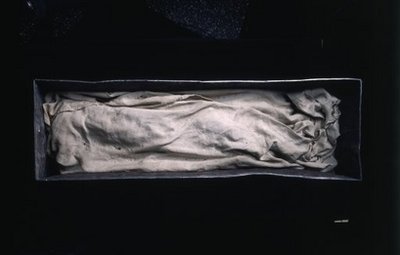
Two years after they were found in Magdeburg Cathedral in northern Germany, experts are now sure they belong to Eadgyth, the granddaughter of Alfred the Great and half-sister of Athelstan, the first king of all England.
It means the bones are the oldest surviving remains of an English royal burial, the team at the University of Bristol said on Thursday.
The discovery involved anthropological study and carbon dating of the bones, but the key was in the teeth preserved in the upper jaw, which contained traces of a diet and environment specific to somebody who had lived in England.
Eadgyth grew up in southern England but was sent to Germany in the year 929 to marry Otto, the king of Saxony, with whom she had at least two children before her death in 946. She was about 36 years old.
"We are what we eat. So we pick up traces of the base metals, the rocks and the isotopes," Professor Mark Horton of the University of Bristol told the BBC.
"And the strontium ratio in her teeth gave us the smoking gun that showed she spent the first few years of her life in Wessex in southern England."
The bones, wrapped in expensive silks, were discovered in 2008 when German archaeologists opened the tomb, but there were doubts that they were Eadgyth's as her remains had been moved several times before being laid there in 1510.
However, analysis of the strontium and oxygen isotopes that are mineralised in teeth as they are formed "unambiguously pinpointed the chalk regions of southern Britain", said Bristol University senior lecturer Alistair Pike.



Reader Comments
to our Newsletter